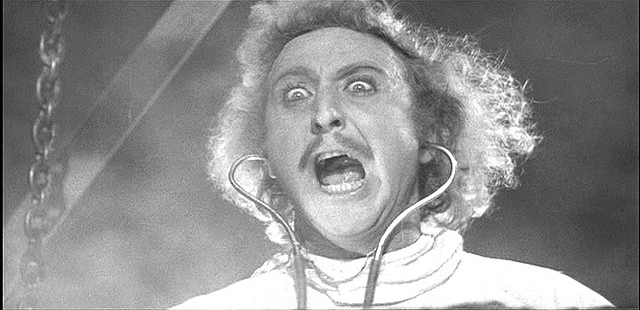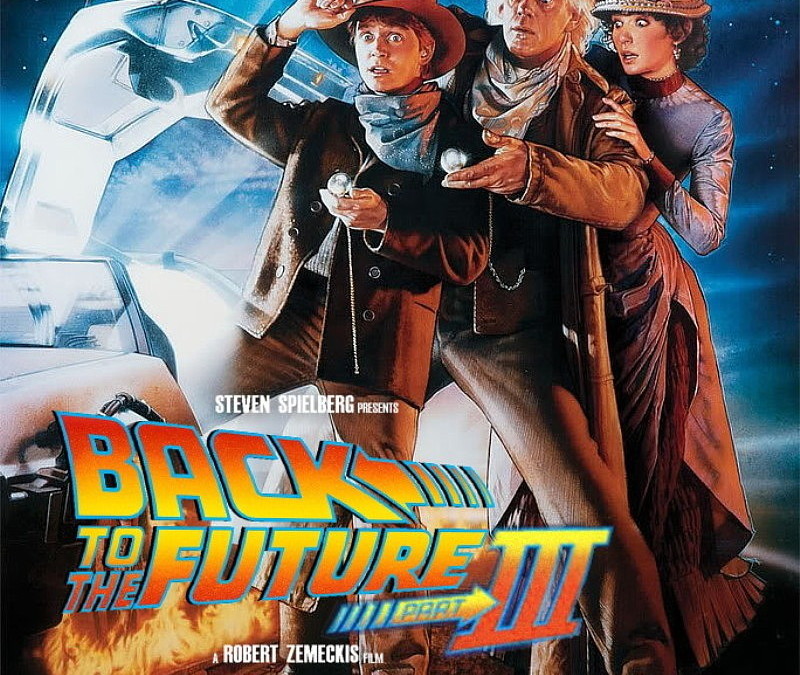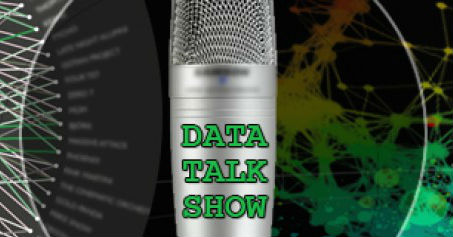
by Stephanie Rabinowotz | Oct 30, 2015 | Big Data
Big Data and Aliens have little in common other than IBM, NASA and SETI’s interest in them.
IBM has announced that they will be lending their Big Data analytics systems to SETI ( Search for Extra-Terrestrial Intelligence) Institute to aid in their hunt for extra terrestrial life. NASA is also working with IBM and SETI, providing deep space radio signals that may contain signals that lead to a discovery of other life forms.
How can IBM help SETI look for aliens?
SETI will be utilizing IBM’s Spark system for it’s machine learning qualities. Spark is an open source data system that is continually improving, making it a wonderfully useful tool in searching for the unknown. The deep space radio signals can be processed by Spark to potentially catch any signals that human analysts may have missed.
SETI is extremely excited about the partnership with IBM as their resources have vastly improved. SETI can now search for extra terrestrial life faster and more meticulously. Instead of relying on stargazers and fanatics, SETI now has the help of NASA which means they will receive data on the far out places of space they never had access to before.
This unique partnership is an innovative way to use Big Data. Many companies today are engaging in Big Data Anlalytics to extract information to better their business, but this is the first we are hearing of Big Data working with SETI. Big Data is such a dynamic tool that can be used in almost any realm. From healthcare to banking Big Data is helping people make decisions and discover more accurate information. With IBM, NASA and SETI working together we are making major leaps in the search for intelligence beyond our world.
Just like its effect on other industries, the use of a Big Data analytics system like Spark saves time and money. SETI is now discovering evidence they have been searching for for years! SETI is especially lucky to have their partnership with IBM so that they do not need to run their own Spark system and can simply use IBM’s.
Who knows, maybe in the next ten years we will be tracking extra terrestrial signals in real time, becoming faster and smarter on our hunt to find life forms beyond ourselves.
To learn about how Big Data is being used in other unusual ways check out this interesting article!

by Stephanie Rabinowotz | Oct 28, 2015 | Big Data, Predictive Analytics
Ever wonder how much Americans actually end up spending on Halloween?
Are you sure you want to know?
It is pretty terrifying…
$7.4 Billion
(Dun Dun Duuuuuh!)
How do you know that? You may ask, well this is where Big Data comes in. The National Retail Federation conducts a survey each year to learn about consumer habits surrounds Halloween. This survey provides the NRF with the data they need to determine spending patterns.
This sort of collected data is what informs stores on which brands of candy to stock up on and how much they should expect to make. Many stores rely on the holiday season to make the majority of their yearly revenue, which is why it is important to study the habits of consumers. Stores want to make as many sales as possible which is why it is crucial for stores to know what their customers want in regards to candy, costumes and decorations.
To understand just how much money these stores are making, lets talk more horrifying data about American spending.
Each Halloween Americans spend,
- $2.8 Billion on costumes. More money is spent on adult costumes than for kids!
- $350 Million on pet costumes…. yes costumes for your furry friend.
- $2 Billion on decorations…. I hope people are reusing them the next year!
- $2.2 Billion on candy. Dentists will be getting a flood of new clients soon!
Although these numbers are astounding, Halloween is an American tradition that 68.5% of our nation celebrates. It is a spooky time of year where people get to be someone or something other than themselves. Kids learn how to share precious possessions such as candy and adults get to excite in some scares.
See how else Big Data is helping the retail industry learn about consumers and better service their needs.

by Stephanie Rabinowotz | Oct 26, 2015 | Predictive Analytics
Early this morning South Asia was hit with a massive 7.5 earthquake. The quake centered in Afghanistan and rattled neighboring countries including Pakistan and India. There have been 180 people reported dead and hundreds injured by the earthquake. Included in this death toll are twelve young girls who were trampled when trying to evacuate their school.
Could these deaths have been prevented?
What if the people of Afghanistan knew there would be an earthquake coming their way?
Is it possible to predict the wrath of mother nature?
With the help of Big Data Analytics- Yes these things are possible.
Innovative companies such as Terra Seismic are revolutionizing the way we look at earthquake data. We have always relied on gathering data after a quake to try to connect patterns and predict the next big occurrence. Terra Seismic has implemented satellite data to predict large earthquakes before they happen, allowing people to prepare themselves.
Terra Seismic is still relatively new and continues to improve the way we foresee these devastating events, but they have already correctly predicted more than a few quakes including the one that hit the Indonesia Island of Sumatra in March earlier this year. I am not sure if the earthquake that rocked South Asia this morning was predicted, but if it was, how might the repercussions be different?
Besides the massive hit the economy takes when faced with the damages of a natural disaster, many people suffer injuries, lose their homes and often times become homeless. If the people of South Asia had been warned about the earthquake that was coming their way, they could have protected themselves better. People could have avoided being near the less developed areas that are home to very unstable structures. Schools could have practiced evacuation drills to prevent the widespread panic that claimed the lives of those poor twelve girls. Hospitals could have been stocked, staffed and ready.
It is hard to say if we can truly ever be prepared for a natural disaster, but with the developing technology and Big Data available, we have a much better chance at less devastating effects than we ever have before.
Learn how big data is helping track and predict the patterns of other natural disasters in this informative article.

by Rich Benvin | Oct 23, 2015 | Data Science
Big Data is arguably the hottest topic of the year. The people who drive this revolution -Data Scientists. Data scientists mine through mass amounts of data and find the connections that can then be translated into valuable information that would otherwise be very difficult to detect. For those who are smart enough to be a data scientist, it is quite the lucrative business.
So how valuable are Data Scientists?
The average salary for a data scientists is $118,000 a year. It doesn’t matter if you are a kid straight out of college of a distinguished individual, with a salary like that you are sitting pretty. Now, mining through data isn’t for the faint of heart. Finding meaningful relationships in a mound of data can be like finding a needle in a hay stack and can sometimes take a long time to uncover anything relevant. With that being said, those who have the training and the patience to succeed in this profession have the opportunity to work for some pretty fun companies.
Google has been rated one of the best places to work and they love their data scientists. Google prides themselves on knowing their users and being able to accurately market to individuals, which takes data and a lot of it. According to Glassdoor, Google pays their data scientists anywhere from $137,626 to $149,292 a year. With this type of salary on top of being able to work at one of the most well liked companies, I would say being a Data Scientist at Google would be a pretty great gig.
Facebook is arguably the biggest social media site on the internet today. The amount of data Facebook collects from its users is colossal, which means they rely heavily on Data Scientists. Have you ever wondered why the advertisements surrounding your Facebook page are eerily accurate to your interests and desires. From volleyball gear to engagement rings, Facebook advertisements always had me pinned. This is because the Data Scientists at Facebook take the information they gather from uses and sell it to companies, allowing them to more accurately market to unique demographics. Facebook pays their Data Scientists between $135,098 and $178,789 a year. Again, not too shabby.
IBM is the world’s largest information technology company and its products include hardware, multiple types of software, storage products, and customized microchips. Similar to Big Data itself, IBM has infiltrated almost any industry you can think of. IBM uses the best Data Scientists to partner with these different industries to make change happen and help lead those industries to better efficiency. IBM compensates its Data Scientists with a salary ranging from $108, 984 to $112,984. Sounds like a great position, being paid well, while also getting to work on some of the most innovative and new technology the world has ever seen!
These are just a few of the popular companies that utilize the brains of Data Scientist to make a difference in the world. Data Scientists are slowly improving many of the largest industries from oil and gas to healthcare and these changes will surely effect us all.
Let us know what you think about Data Scientists, are they paid too much, too little, or just right?
Share with us on our Facebook Page!

by Stephanie Rabinowotz | Oct 21, 2015 | Big Data, Save With Data
With today being “Future Day” due to October 21, 2015 being “the future” in the movie Back To The Future directed by Robert Zemeckis, it has got me thinking about Big Data and the future.
Without Big Data would we have achieved many of the predictions of the future made in the Back To The Future movie?
Where will Big Data take us by 2030?
With Big Data infiltrating most industries these days, we can bet that it will greatly effect the way we live by 2030. Healthcare is being revolutionized with better patient records, communication between hospitals and the CDC to control the spreading of epidemics, and even the race to cure cancer s being aided by big data. Transportation is evolving with better taxi apps and the beginning of self driving cars. Our own homes are even being upgraded by big data, with an improving real estate system and the ongoing progress in the idea of a “connected home”.
These are just a few of the different areas Big Data is making an impact, so what does this mean for our future?
What will daily life be like?
Are our jobs going to be taken over by computers?
My predictions for 2030 are as follows,
- Doctors will have access to thousands of patient records with the touch of their finger. There will be a digital library that can analyze symptoms and present multiple similar cases, the steps taken and the percentage of positive outcome. This will decrease the amount of tests needed to diagnose symptoms and ultimately save the patient a lot of money and the doctor a lot of time.
- Houses will be equipped with smart devices that communicate with one another to save energy and control routine actions such as turning a light on or off automatically. Houses will be able to tell when the owner is about to be home and automatically kick on the heat or air, turn on the lights, unlock the doors and who knows they may even make you cup of coffee!
- Transportation will be drastically improved with self driving cars and more efficient taxi services such as Uber. Uber will be able to track a frequent customer’s debit transactions to know when they close out a tab close to closing time in a bar. This will allow the Uber driver to be outside of the bar and ready for when the customer stumbles out.
- Shopping will be more than likely completely different. With the way large stores track consumer habits I wouldn’t be surprised if the stores could communicate with our smart homes to determine which foods or household products we are low on and automatically deliver them to our front door by most likely a drone.
Does this mean we are going to start losing our jobs to automated technology? Yes and no. Sure some jobs will be taken over by computers because it makes the most sense, it is most efficient. That doesn’t mean everyone is going to be out of work. All of these technologies and programs must be monitored and serviced. I think in the next fifteen years we are going to see a major shift in our educational departments towards more technological training. We will need to have more people who are proficient in the new technologies to keep up with any of them. There will be a lot of jobs created to both monitor and service these technological advances.
Will any of this happen by 2030? Will it happen at all?
Who knows, but humans have never ceased to amaze me with their ability to create new and exciting things.
Let us know what you think, where will our world be in 2030?
Happy Future Day!!!











Recent Comments